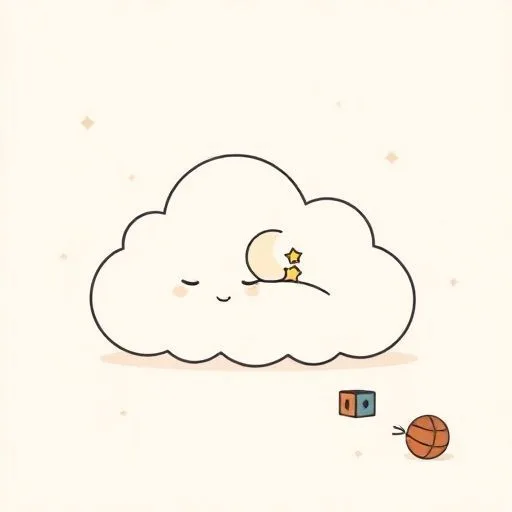
You know, kids are just amazing sponges, soaking up *everything* around them! The patterns we establish for ourselves—our eating habits, our relationship with technology, our approaches to rest and activity—become their unspoken guide, the silent blueprint for how they’ll navigate the world. When we explore how adults optimize their health and performance, we’re not just picking up new tricks for ourselves; we’re gathering materials to build the foundation upon which young minds will grow. The enthusiasm we bring to our own well-being journey naturally transfers to children, creating an environment where healthy habits become joyful adventures rather than obligations!
Patterns That Plant Seeds of Healthy Habits?
The daily rituals we maintain without much thought—when we eat, how we move, the moments we dedicate to stillness—these become the rhythm children recognize as “normal.” Research shows that intermittent fasting can improve metabolic health markers for adults, but the real gift for children might be the establishment of predictable patterns their bodies can count on. It’s not about restriction, but about creating the kind of dependable structure that helps developing minds feel safe and secure.
These dependable steps are at the heart of healthy habits for kids. Imagine the delight on a child’s face when they discover the predictability of meal times or the comfort of a familiar bedtime routine—these small moments of consistency build the infrastructure of trust that supports all future learning. Watching them bloom inside these boundaries? Pure magic! It’s just the most incredible feeling to see them discover themselves within these structures we’ve intentionally created!

What’s the Natural Rhythm of Growing?
Intermittent fasting works best when paired with resistance training. And guess what? This same principle totally applies to our amazing kids! Their natural play—running, climbing, exploring—serves as the perfect “resistance training” for their developing bodies, laying the groundwork for children’s health habits.
Have you ever noticed how your child can become completely absorbed in a task, only to suddenly need a snack or some quiet time? That’s their body instinctively telling them what it needs!
The growing minds work in similar cycles, alternating between focused activity and restful withdrawal. By observing these natural rhythms in our children, we can learn to guide rather than direct, allowing exploration to follow its own organic path.
Seriously, watching these natural patterns emerge? It’s nothing short of breathtaking! These tiny humans are teaching us more than we could ever teach them, and it’s absolutely exhilarating to be on this journey of discovery together!

Building Strong Foundations for Healthy Habits?
Now, what can we, as adults, learn from our own wellness journeys that directly benefits our kids? Well, the emphasis on healthy rhythms isn’t just for us grown-ups! While we might focus on things like resistance training and intermittent fasting for our own fitness, the underlying principle applies beautifully to childhood: developing strength—physical, mental, and emotional—supports their ability to thrive. In the world of tiny explorers, this translates to the importance of challenges—big and small—that build those incredible resilience muscles!
Every difficult puzzle, every negotiation with friends, every attempt at tying shoelaces is an opportunity to strengthen the mental and emotional foundations that will serve them well throughout their lives. This approach fosters kids’ wellness routines.
What a powerful metaphor this provides for parenting itself! Just as adults need physical resistance to build muscle, children need intellectual and emotional challenges to build confident, capable minds. There’s nothing quite like the spark of pride in a child’s eyes when they master a challenge they’ve been working on—it’s pure magic, absolutely bursting with joy!

Smart Tools for Bright Beginnings?
I was reading about how experts use AI to boost their own knowledge, and it got me thinking about our kids and technology! The lesson is all about balance—just as professionals double-check AI medical advice with real experts, we can help our children approach technology as a helpful companion rather than a replacement for human wisdom. When our little ones discover educational apps or digital tools that spark their curiosity, these can serve as launchpads for deeper exploration.
Just as Tim uses AI to enhance professional knowledge rather than replace it, we can help children see technology as a way to amplify their questions rather than an answer to be accepted blindly. The current generation of children is growing up in a world where AI in education is becoming more commonplace, and they’re adapting with incredible creativity! It’s absolutely exhilarating to watch them use interactive storybooks that respond to their questions or art programs that help them create digital masterpieces.
These moments remind us that technology, when balanced with real-world exploration, can become a wonderful extension of their imagination.

The Recovery Every Child Needs?
The importance of rest and recovery in performance optimization isn’t just for adults. Children’s bodies and brains are constantly developing, making quality rest even more essential.
What about those moments when a child who’s been struggling with a concept suddenly understands it during a walk in the park or while playing with toys? That’s the magic of recovery and play at work!
Children’s natural inclination for play and daydreaming isn’t merely pleasant—it’s a vital form of mental recovery that fuels creativity and problem-solving abilities. When we honor their need for unstructured play and downtime, we’re not just being indulgent; we’re supporting the fundamental processes that will help them thrive in school, relationships, and beyond.
These breakthrough moments? Not accidents at all! They’re the magic that happens when we create those beautiful quiet spaces for their minds to wander and make unexpected connections. Just imagine giving our incredible children the freedom to truly rest their minds—this isn’t just a gift, it’s a superpower that unlocks entire universes of understanding and creativity! This is where the magic of AI in education can complement traditional learning methods, offering personalized pathways for growth.

Source: Q&A with Tim — Supplements I’m Taking, Austin vs. SF, Training for Mental Performance, Current Go-To AI Tools, Recovering from Surgery, Intermittent Fasting, and More (#826), Tim Blog, 2025/09/09
